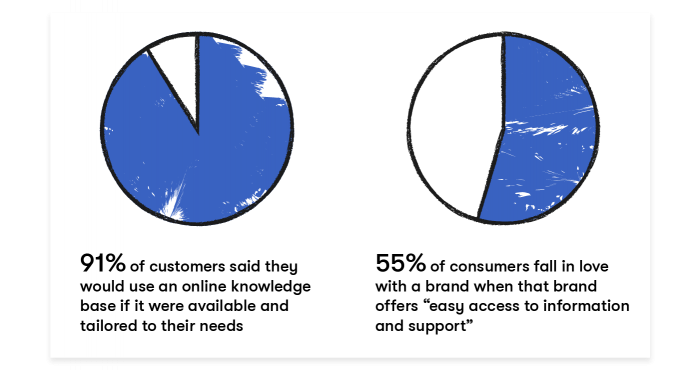The New Year is here, but there’s a good chance your teams are still working remotely. The COVID-19 pandemic is still relevant and vaccines will be slowly rolled out throughout the year, thus, permanent remote work is expected to double in 2021.
If your business has already considered the possibility of permanent remote work or has extended that option to certain teams – say, your customer service team – then you may find yourself facing a new set of challenges in 2021.
Not to worry. In this article, I’ll discuss the different ways you can support your remote customer service team and set them up for success in the new year.
1. Utilize a project management tool
You’ve likely been using a cloud-based project management tool throughout 2020 to keep your tasks organized, but also hold each other accountable for project deadlines. Although, if you’ve just been working out of spreadsheets or disparate tools, you need to consider a project management option.
Many of today’s more mainstream project management tools have free or freemium options with limited seats. This allows small businesses with tighter budgets to reap the benefits of cloud-based tools without breaking the bank.
2. Schedule voice or video meetings
The voice and video conferencing market is seeing unprecedented growth since the COVID-19 pandemic. In fact, the cloud conferencing market is on track to exceed $9 billion by 2026.
Remote customer service teams can benefit greatly from the use of these tools, or better yet, a UCaaS platform with all-in-one voice and video collaboration. These platforms also keep track of customer support metrics, which is important for remote managers when analyzing individual employee performance.
Another key feature of video conferencing software is the ability to share screens for increased collaboration. For example, if you’re a remote customer success manager and you need to walk your team through a new support process, you can do so by sharing your screen. Simple enough.
3. Create an employee knowledge base
A reported 80% of consumers have higher customer service expectations during the COVID-19 pandemic. With increase expectations, your customer service team needs to be razor-sharp when an inquiry reaches their phone line or chat room.
One of the best ways to ensure your remote team can be quick to resolve issues is by using a knowledge base. This is a repository that employees can access when referring to common or more complex customer questions.
Knowledge bases are often underutilized in organizations but are an important part of supporting your teams. A reported 40% of a rep’s time is spent researching back-end systems for support answers while customers wait on hold. This time can be greatly reduced with a frequently-updated knowledge base.
4. Enhance your customer support pages
Sometimes, customers don’t care to interact with your support team and want to find the answers for themselves quickly. In this case, you need to ensure your support pages are not only updated but are easily accessible.
According to Groove, 91% of customers said they would happily use a customer-facing knowledge base if it were available and answered their questions – 55% of those customers said they would “fall in love” with a brand that offers easy access to information and support.

Frequently updating your support pages as your product or service develops is imperative for keeping the pressure off your remote support team. In fact, you should do some keyword research to see what the most frequently asked support questions are for your brand and build an entire webpage just around that.
5. Utilize chat tools on your website
Another way to clear up support bandwidth for your remote customer service team is to utilize live chat and/or chatbots on your website. Below is a quick differentiation between the two tools:
Chatbots: Are automated chat response tools. Once clicked by a site visitor, they’ll be able to answer simple questions either using buttons or conversational AI. For example, if you tap the button “where is my order?” the bot could intake an order number and return the live status of your order – all without a human rep.
Live chat: Is if a question escalates and becomes more complex, a human rep can enter the chat room and take it from there. This could actually help with sales in addition to support, as 77% of consumers said they’d like to speak with a real person before making a purchase online.
6. Hire people with remote experience
In a recent survey, more than 52% of workers have little to no experience working remotely. If your organization has opened up headcount for customer service roles, it could be beneficial to look into employees with prior remote experience.
Employees with a remote background understand how to ramp up while being removed from an in-person team. They already have a grasp on remote tools like voice and video conferencing software, team chat software, time tracking software, and more. Additionally, these employees already know what to expect from virtual onboarding and virtual team collaboration. Hire smarter with this year’s budget.
Final thoughts
Your customer service team may be away from the office, but they’re still in the trenches every day with your customers, ensuring their issues are resolved. It’s up to remote managers to provide that support and encouragement even when teams are distributed.
My final tip: Don’t be afraid to overcommunicate. There can be a lot of grey areas with remote work, so be proactive and answer questions before they arise. Overcommunicating priorities to your remote team only improves work processes and productivity.



